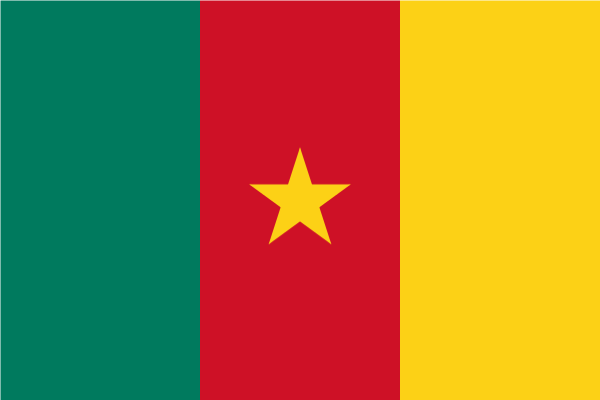Beyond the aspect of sovereignty that it implies, the symbolism of the constituent elements of a country's flag also teaches us that a State is a history, a culture, a people, a nation, a space and a geography. Indeed, there is no people without history, without cultural elements which refer to the realities of a land inhabited by populations called upon themselves to manifest a joy of living together which does not exclude the other but the considers itself as a full member of a national Territory where each component is called to work for the good of the whole.
After a succession of periods of protectorate, trusteeship and mandate, Cameroon or at least part of its territory under French administration finally became an independent country. Although this objective sought since the end of the First World War and assigned to the French and British respectively by the League of Nations (SDN) and the United Nations Organisation (UNO) was achieved at the beginning of 1960, this was a decisive step in the march towards unity whose positive results of the first communication efforts with a view to reunification allowed in particular the adjustment of the national flag to translate symbolically and formally a desire for federation or quite simply to live together. Indeed, on January 1, 1960, autonomous Cameroon became independent under the name of the Republic of Cameroon with a green-red-yellow tricolour flag adopted not by a new legislative assembly but that of May 10, 1957. In the meantime, Cameroon under administration British is not yet independent. The two great powers were autonomous in the administration of the territories entrusted to them.
We would perhaps have expected that by common agreement, the British, the French and the international community would grant independence to the entire Cameroonian Territory but the organization of an election with a view to leaving those who were under British administration to join or not neighbouring Nigeria shows that the real objective was not reunification but the expansion of an English-speaking territory.
This unspoken objective was nevertheless partially achieved. The northern part of British Cameroon joins the federal republic of Nigeria while the southern part chose to join the republic of Cameroon on condition that there is a change in the form of the State, that is to say, presidentialist power be replaced by a federation embodied by the head of state and federated states having a particular status with their own government and powers guaranteed in the constitution while having a superior authority embodied by a president of the Republic.
| Also read : Cameroon : October 1st commemoration of the beginning of a march towards the Nation-State
The talks resulted in the reunification of the country on October 1, 1961 under the name of the Federal Republic of Cameroon with the national colour of the traditional green-red-yellow of the legislature of May 10, 1957 but this time with two stars on the green strip symbolizing the two federated states.
Since the head of State at the time was a product of the French administration, he did everything possible to change this name with British connotations. This is how in 1972, the federal republic became the Republic of Cameroon with an additional change in the national colours namely: a single star on the red band and adopted on May 21, 1975. The change in the form of the State resulted in a de facto change to the flag of the republic.
French influence got the better of British influence to give birth to a unitary State which adopted a strategic multilingual policy which is only a palpable consequence of a double influence which all the same has the merit of having contribute to making Cameroon a bilingual State.
The flag of the Republic of Cameroon as it is today is the result of a series of reflections, sharing and consensus that began before the independence of the country. The four cultural areas are represented there as well as the authority which embodies the national unity to which they refer. If the three colours, namely green, red and yellow, arbitrarily represent the struggles for independence, the sovereignty of the country, the hope of a rich and prosperous Cameroon, and the sunny nature of a State where life is good, the golden star for its part refers to a Cameroon which remains One and indivisible despite legitimate demands unfortunately tainted by abuses which complicates the settlement of an armed conflict which we hope will still have a happy outcome thanks to the multiple means implemented and expected.
English|French

